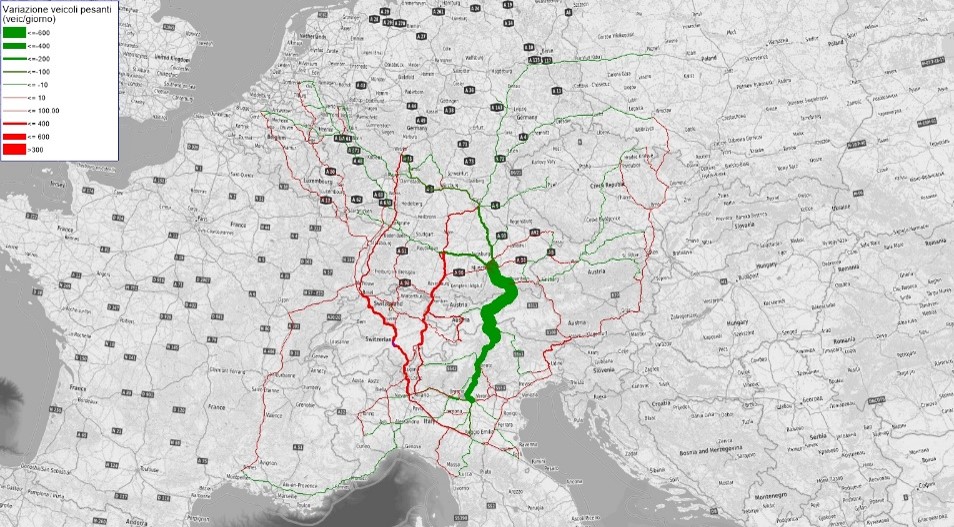Application of the TRUST model to support the resilience analysis of the Alpine crossing system
The aim of the study was to analyse the resilience of the Alpine crossing system, that is, to evaluate how much the complex of crossings can guarantee an adequate level of service in case of “breakdown” events. For this purpose, the TRUST model, which is a strategic model at European scale, was used to simulate the functioning of the entire range of crossings with respect to the different hypothesized scenarios.

The definition of the scenarios considered the fact that, from the point of view of their modelling, it is not the nature of the event that generates a certain variation of the inputs that is significant, but the extent of the variation that is determined in the functioning of the transport system. The scenarios have been translated into variations of one or more input elements of the model itself, namely: availability of some arcs to the modelled vehicle categories, capacity of the road links, travel speed on the links for the modelled vehicle categories.
The application of the TRUST model produced, for each scenario, the following results compared to the reference situation:
- Relative variation of traffic flows on each Alpine pass
- Variation of modal shares for the set of demand volumes between Italy and Northern Europe and for different origins-destinations between groups of zones
- Variation of transport cost and time on a sample of origin-destination relationships between NUTS3 zones
- Variation of CO2 and pollutant emissions (PM, NOx) for the set of demand volumes between Italy and Northern Europe and for different origins-destinations between groups of zones and on the network links

